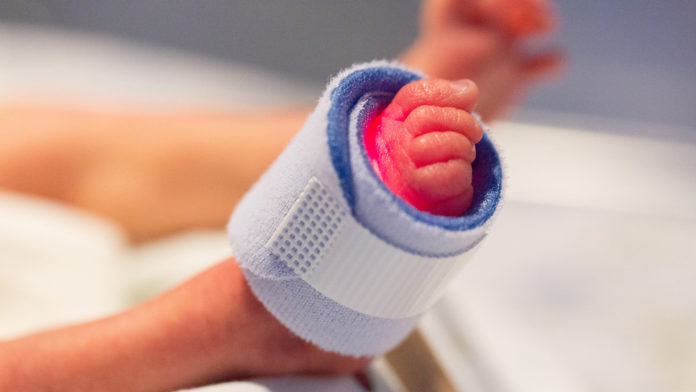A baby’s lungs are among the last organs to fully develop, making breathing one of the biggest challenges for pre-term babies in neonatal care. But an international team has developed an artificial placenta that uses the baby’s own heart as a pump, circulating blood through its channels to oxygenate blood via the umbilical cord.
Ravi Selvaganapathy, professor of mechanical engineering and principal investigator on the study, specializes in microfluidics. In his lab, he designs devices where liquids are confined to tiny channels under a millimeter in diameter, precisely controlling how they move, mix, and divide.
Microfluidic devices are perfect for designing an artificial placenta, as being able to manipulate tiny volumes is essential; a premature newborn might only weigh around a kilogram, with a total blood volume around 100 mL. That leaves only 10 mL, or two teaspoons, that can safely be withdrawn at any given time. Passing blood through thin channels efficiently provides a large surface area for oxygen transfer.
The newest design is six years in the making, and improves on previous designs by using both sides of the device for gas exchange instead of just one. Doubling the area for oxygenation improved oxygen transfer by up to 343% versus previous single-sided designs. The team accomplished this using a microwire stainless steel mesh to reinforce gas exchange membranes on both sides of their microchannel network.
Presently, preemies who struggle to breathe may be mechanically ventilated or connected to an extra-corporeal membrane oxygenation (ECMO) machine, but both of these options can have major side effects. Mechanical ventilation can damage the lungs, and severe breathing complications can persist into adulthood.
Meanwhile, ECMO requires large blood volumes and surgery to access large blood vessels. It’s possible to use donor blood to make up the volume, but adult blood and baby blood are different, and the external pump used can also damage blood cells and trigger clotting.
By contrast, the artificial placenta mimics how a real placenta works. Without any external pumps, the artificial placenta is designed to connect to the baby’s blood supply non-invasively through the umbilical cord, using the baby’s own heart to move blood through the device before being returned to the body.
The team used clinically relevant conditions, such as blood flow rate and pressure drops across the umbilical cord, to test their device in the lab. The double-sided design can support up to 30% of the oxygen needs of a 1-2 kg preemie when operated in a pure oxygen environment, taking some of the strain off the developing lungs.
The team plans to test their prototype in animal models before moving to human trials, and hopes that further refinements may allow them to use ambient air instead of pure oxygen. Using tiny technology, this device could one day help our tiniest patients stay alive.








































